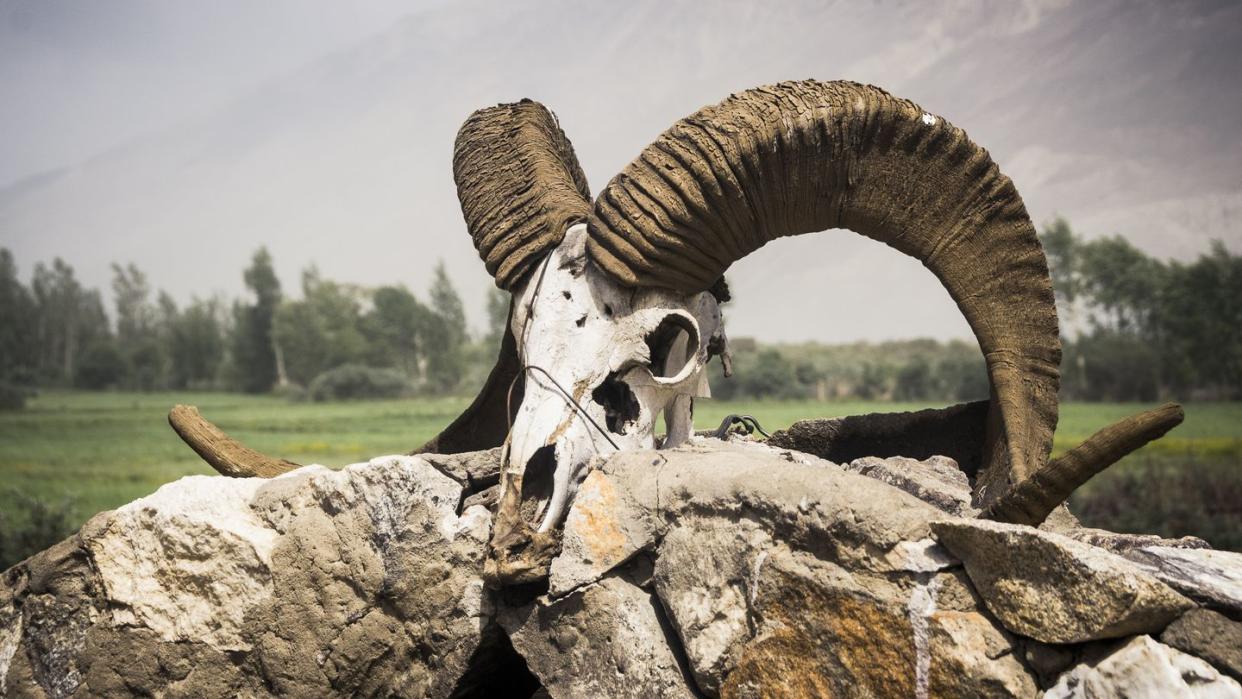A Rancher Smuggled Exotic DNA to Create a Super Sheep. Then, the Feds Came Calling.

The Marco Polo sheep, native to Central Asia, is the largest species of sheep in the world, which makes it a tantalizing target for trophy hunters.
For nearly a decade, Montana ranchers illegally developed hybrid sheep, created with Marco Polo sheep DNA, to create animals for shooting reserves and game ranches in Texas.
On Tuesday, the Department of Justice (DOJ) announced that on of the ranchers pleaded guilty to two counts of felony wildlife crimes, with each count carrying a maximum penalty of five years in prison.
For nearly 800 years, Ovis ammon polii—known commonly as the Marco Polo sheep—has fascinated the western world. Named after the world-famous explorer who was the first European to describe the sheep in the 13th century, this subspecies of argali sheep calls the mountainous Pamir region of Central Asia (Kyrgyzstan, Afghanistan, and Tajikistan) its home. It is the largest wild sheep species in the world, standing nearly four feet tall, weighing nearly 300 pounds, and growing massive horns that can be as long as 6 feet and weigh upwards of 60 pounds.
Unfortunately, this animal’s impressive stature also makes it a prime target for hunting, and some will pay upwards of $40,000 for the opportunity. Sadly, the desire to hunt this majestic animal has reached a breaking point this week, as the U.S. Department of Justice (DOJ) detailed an absolutely bonkers scheme to create giant hybrid sheep in the U.S. using genetic material extracted from illegally imported Marco Polo sheep.
The goal of this macabre scheme? To create a kind of Frankensheep—using cloning, hybridization, and artificial insemination—to ultimately sell to captive hunting operations (whether shooting preserves or game ranches), most of which reside in Texas.
For nearly a decade, Montana rancher Arthur “Jack” Schubarth, along with five other accomplices, committed several violations of the Lacey Act. First passed back in 1900, the act combats the illegal trafficking of wild animals. On Tuesday, Schubarth pleaded guilty to two felony wildlife crimes—each count carries a maximum penalty of 5 years in prison, a $250,000 fine, and three years of supervised release.
“This was an audacious scheme to create massive hybrid sheep species to be sold and hunted as trophies,” Assistant Attorney General Todd Kim of the Justice Department’s Environment and Natural Resources Division (ENRD) said in a DOJ press statement. “In pursuit of this scheme, Schubarth violated international law and the Lacey Act, both of which protect the viability and health of native populations of animals.”
Unable to acquire living Marco Polo argali sheep due to their transparent size, Schubarth instead illegally imported parts of an Ovis ammon polii, extracted its genetic material, and created cloned embryos in a laboratory. After implanting the embryos into ewes on his 215-acre “alternative livestock” ranch, Schubarth finally got his hands on “a pure genetic Marco Polo argali,” according to the DOJ.
Named Montana Mountain King, or MMK, this argali outweighed even the beefiest of Marco Polo sheep, the Telegraph reports. MMK’s semen was used to impregnate other species of ewes to create hybrid specimens. Schubarth’s actions not only violated the international protections of the Marco Polo argali, as stipulated by the Convention on International Trade in Endangered Species, but also ran afoul of the U.S. Endangered Species Act and Montana’s own laws designed to protect native sheep from disease and hybridization.
Montana Mountain King is now in the custody of the U.S. Fish and Wildlife Service, and as part of the plea deal, animals containing MMK DNA will be quarantined and possibly neutered. So, the best way to see these magnificent animals will require following in the footsteps of Marco Polo and glimpsing them in their native habitat.
You Might Also Like

